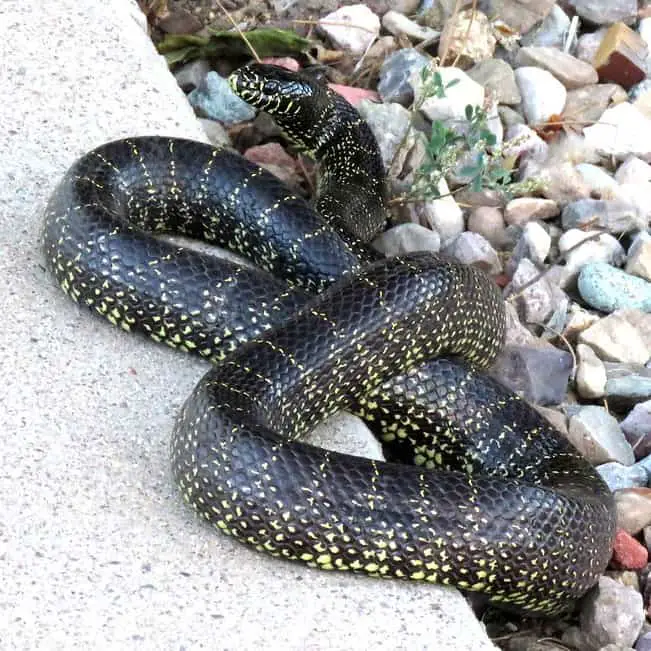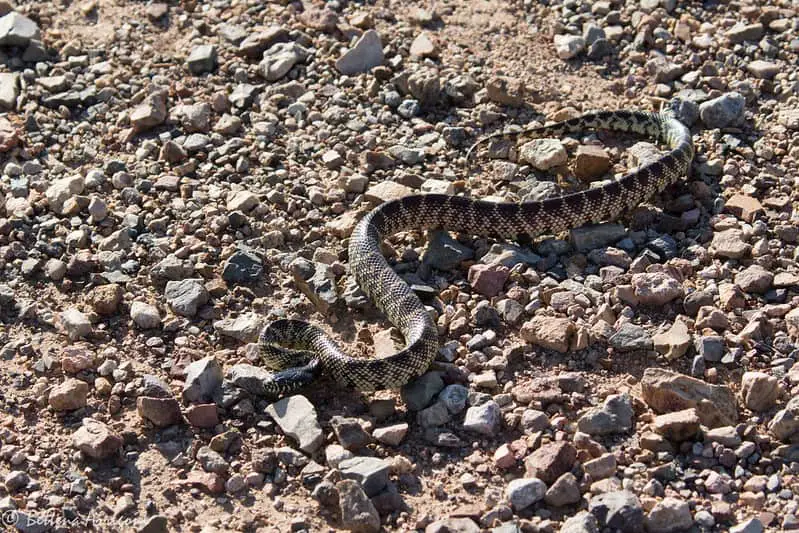The desert kingsnake is a large black snake with yellow crossbands or spreckles. It occurs in the Southern United States and in Northern Mexico. The desert kingsnake was previously considered a subspecies of the common kingsnake (Lampropeltis getula) and is still somtimes referred to as Lampropeltis getula splendida.
Description
The desert kingsnake most commonly has a black or dark brown body color. Its body is adorned with yellow or white patterns. These can be either numerous small dots, thick crossbands or a mixture. Since the desert kingsnake shares its range with the closely related California kingsnake in the west and the speckled kingsnake in the East, the species often interbreed. Therefore, various combinations of the patterns are possbile.

Size
Desert kingsnakes reach an average length of 35-45 inches (90-115 cm). A very large specimen can reach a maximum length of up to 60 inches (150 cm).

Hunting Behavior and Habitat
The common name desert kingsnake is not a reference to its natural habitat but rather to its geographic distribution. Desert kingsnakes are usually found in relatively humid environments. Their diet mainly consists of reptiles including other snakes such as rattlesnakes. To limit the risk of being bitten, the king snake attacks its prey by biting and fixating its head, thus preventing it from opening its jaws. It then gradually swallows its victim while still alive. During this process, it always keeps the prey’s head constrained.
Like other kingsnake species, the speckled kingsnake is resistant to the venom of rattlesnakes and copperhead and cottonmouth snakes. So even if they get bitten while trying to eat them, they will most likely be fine. However, a large amount of venom or a large number of intense bites can still harm and possibly kill a king snake.
Bite
Kingsnakes are nonvenomous snakes and harmless for humans. If they feel threatened or are handled, they don’t hesitate to bite, however. Their bite will not have any serious effect on humans or larger pets but should be cleaned and disinfected as any other wound.
Desert kingsnake range in the USA
The desert kingsnake can be found in Northern Mexico and in Texas, New Mexico, Arizona and Colorado in the United States.
Scientific classification of Lampropeltis splendida
- Kingdom: Animalia
- Phylum: Chordata
- Class: Reptilia
- Order: Squamata
- Suborder: Serpentes
- Family: Colubridae
- Genus: Lampropeltis
- Species: Lampropeltis splendida
The desert kingsnake has been elevated to species level in 2009. Previously, it was considered a subspecies of the common kingsnake and is still sometimes refereed to as Lampropeltis getula splendida.